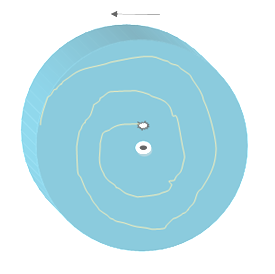Question 6: An insect is sitting close to the axis of a wheel. If the force of friction between the insect and wheel is very small, describe the motion of the insect when the wheel starts rotating.
ANSWER
When a body is in circular motion, it has a tangential velocity; tangent at every point of the circle. (Tangent is a line that makes an angle of 90° with the radius of the circle and touches the circumference of the circle at just one point).

It also has a rotational velocity caused by the centripetal force acting toward the center of the circle.
Hence, the resultant velocity of the body is the sum of the tangential and rotational velocities keeping the body at the circumference of the circle as trajectory of the motion.
Now let’s consider the motion of the insect. Here, the centripetal force is provided by the friction between the insect and wheel. Since the friction is very small, the centripetal force will also be very small, less than the centrifugal force. As a consequence the tangential velocity will also be greater. So, at any point, the insect will be sliding away from the center of the wheel; the axis of rotation. The result will be a motion along a spiral path.
Pingback:number-of-geo-stationary-satellites for full coverage of T.V transmission – msa
Pingback:a-swinging-ball-breaks – msa
Pingback:index-short questions, Rotatory and Circular Motion, Physics 11 – msa